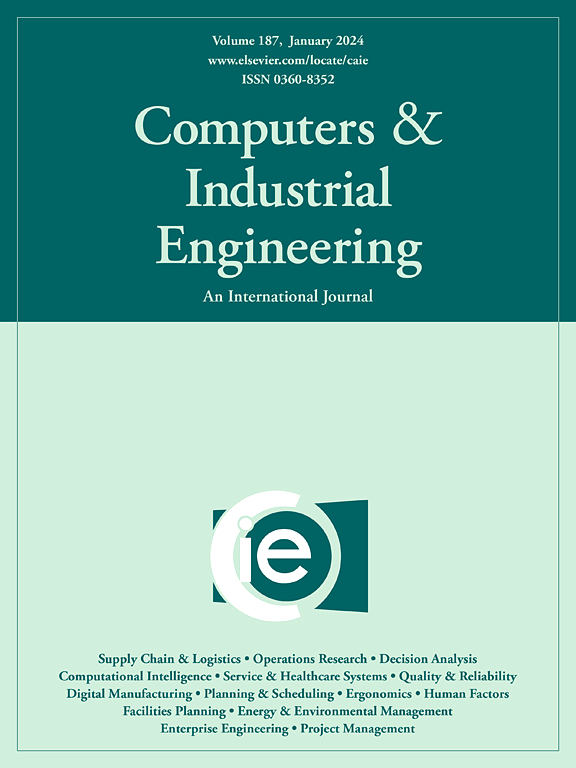Joint optimization of route and frequency with flexible rail pricing in a container intermodal
IF 6.7
1区 工程技术
Q1 COMPUTER SCIENCE, INTERDISCIPLINARY APPLICATIONS
引用次数: 0
Abstract
This paper focuses on how to optimize road-rail-combined routes and container-train-associated frequencies for effectively delivering freight demands from origins to destinations in a container intermodal network. Unlike common single-rate rail pricing contracts, we employ a flexible rail pricing (FRP) contract which depends on freight carrying volumes and average loading rates within the corresponding rail subnetwork. With the help of the formulated FRP requirements, a bi-objective integer programming model is developed for this problem, aiming to minimize the total freight transportation cost and maximize the total rail net profit. Further, we tackle the nonlinear constraints caused by FRP through the big-M method. The model, with the purpose of enhancing applicability and flexibility, is then extended to incorporate actual route selection rules. By using the ε-constraint method, the obtained bi-objective models are transformed into single-objective forms, which are addressed with state-of-the-art commercial solvers and heuristic strategies. Finally, we perform several different-sized numerical experiments to validate the efficiency and effectiveness of the proposed approach.
集装箱多式联运中灵活定价的路线和频次联合优化
本文主要研究如何优化公路-铁路联合路线和集装箱-火车相关频率,以便在集装箱多式联运网络中有效地将货物需求从始发地运送到目的地。与普通的单一费率铁路定价合同不同,我们采用灵活的铁路定价(FRP)合同,该合同取决于相应铁路子网内的货运量和平均装载率。根据制定的FRP要求,建立了以货物运输总成本最小、铁路总净利润最大为目标的双目标整数规划模型。此外,我们通过大m方法处理FRP引起的非线性约束。为了提高模型的适用性和灵活性,将模型扩展到实际的路线选择规则中。利用ε-约束方法,将得到的双目标模型转化为单目标模型,并用最先进的商业求解器和启发式策略对其进行求解。最后,我们进行了几个不同规模的数值实验来验证所提出方法的效率和有效性。
本文章由计算机程序翻译,如有差异,请以英文原文为准。
求助全文
约1分钟内获得全文
求助全文
来源期刊

Computers & Industrial Engineering
工程技术-工程:工业
CiteScore
12.70
自引率
12.70%
发文量
794
审稿时长
10.6 months
期刊介绍:
Computers & Industrial Engineering (CAIE) is dedicated to researchers, educators, and practitioners in industrial engineering and related fields. Pioneering the integration of computers in research, education, and practice, industrial engineering has evolved to make computers and electronic communication integral to its domain. CAIE publishes original contributions focusing on the development of novel computerized methodologies to address industrial engineering problems. It also highlights the applications of these methodologies to issues within the broader industrial engineering and associated communities. The journal actively encourages submissions that push the boundaries of fundamental theories and concepts in industrial engineering techniques.
 求助内容:
求助内容: 应助结果提醒方式:
应助结果提醒方式:


